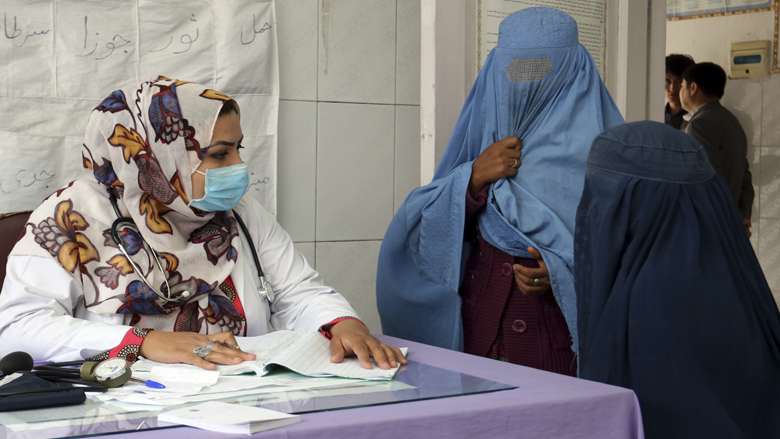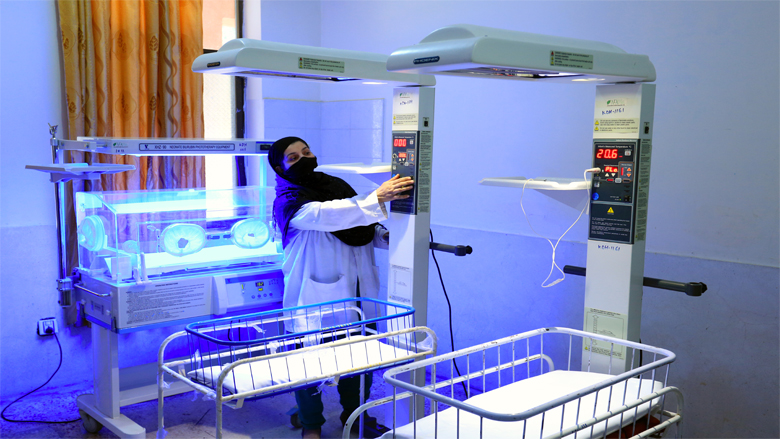Challenge
Afghanistan’s health system faces a critical shortage of key ingredients – qualified healthcare workers, especially female healthcare workers to ensure that women can seek health services; safe and equipped facilities, particularly in areas that are experiencing active conflicts; and supplies of medicines, equipment and vaccines. Insecurity, gender imbalances, and lack of government revenue severely limit the availability of even the most basic healthcare for most Afghans – and the situation has become particularly acute during the COVID-19 Pandemic.
Approach
The Sehatmandi program builds on the innovative approach of contracting out the provision of virtually all basic and essential health services to service provider non-governmental organizations (NGOs). The project takes a pay-for-performance (P4P) approach that directly links the payment of service providers to their performance on the delivery of 11 key health-related services such as immunization, skilled birth attendance, family planning visits, and growth monitoring of infants and children. The performance is verified by an independent third-party monitor before payment is made. The expected outcomes are clearly spelled out and quantified and customized for each province of the country through a contract between the MOH and the NGO with set terms for service standards.
--------------------------------------------------------------------------------------------------------------
“While cooking in the kitchen, I stopped breathing and my vision went dark. When I woke up, I was on a hospital bed. Every time I come here, doctors are so respectful and care about us. My neighbors and I are so pleased. It is five days that I am here in hospital and I have had a very good experience. I appreciate the hospital’s management system. There are so many patients, but the doctors are always doing their best.”
Gulab Zarin, Kama district, Nangarhar province
-------------------------------------------------------------------------------------------------------------

The project focuses on improving the value-for-money by enhancing accountability and transparency in the health sector and is a cutting-edge model for service delivery in fragile and conflict-affected settings.
The project has effectively served as a platform to channel the resources of key development partners in a common results framework to finance basic and priority health services across the country with minimal management cost, including in highly insecure and conflict-affected areas which are difficult to serve.
